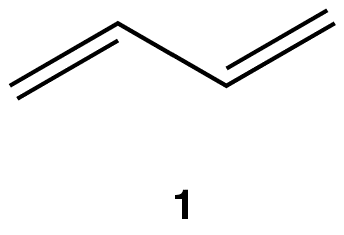Kinetic Control
- Page ID
- 40594
When two or more irreversible reactions of the same reactants compete under a given set of conditions, the system is said to be under kinetic control, and the major product is the faster forming product, which is called the kinetic product. The conditions that ensures that the system is under kinetic control are called kinetic conditions.

k1, k2 = rate constants
If k1 > k2, given that the two reactions have the same reactants, rate of formation of R > rate of formation of S, [R] > [S]
with R = major product, S = minor product
eg: Reaction of 1,3-butadiene (1) with Br2 at –78 °C.

Two products were isolated:

2 is more stable than 3 because 2 has the more highly substituted, therefore, stronger double bond. Experimentally, the less stable product 3 is the major product, implying that the reactions leading to products 2 and 3 are irreversible ( see thermodynamic control), i.e., the system is under kinetic control. The conditions used to ensure irreversibility of the reactions, namely, very low temperature, are kinetic conditions.


